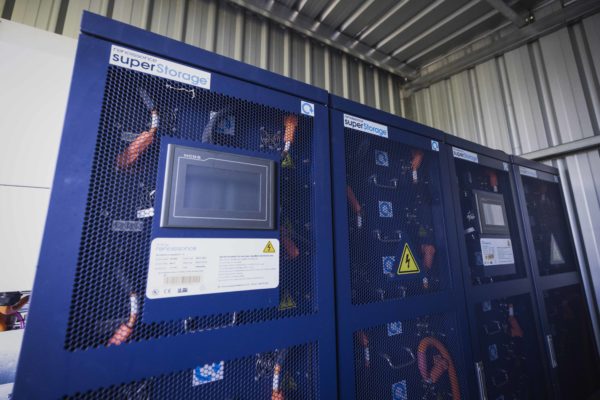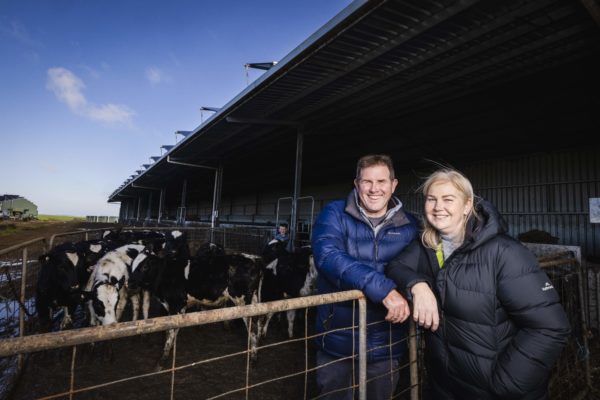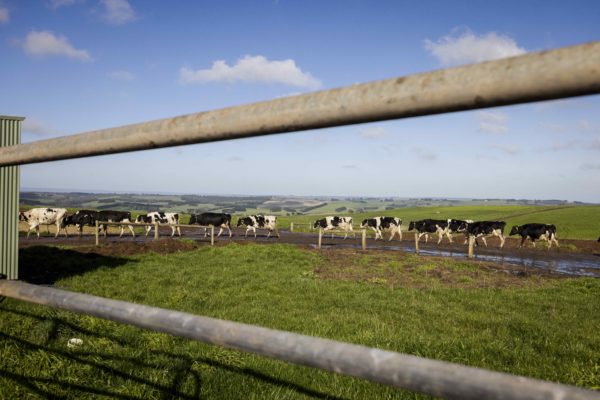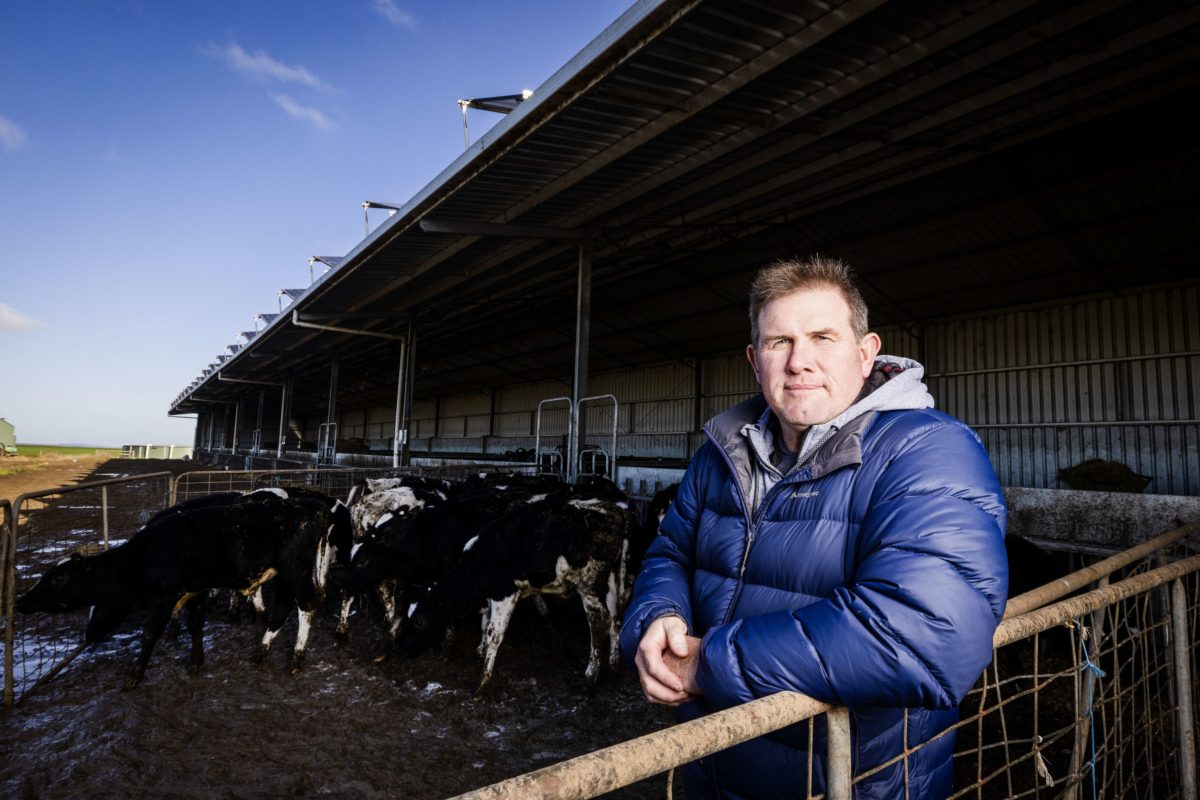Like so many regional properties in Australia, Nikep Dairy Farm in Simpson, southwest Victoria, sits on the fringe of a stringy electricity grid. The dairy, owned by John and Rochelle Pekin, has a 100 kW transformer which overloaded and failed 315 times last year – nearly everyday.
The frequent “brownouts” experienced on the farm, John says, have damaged his gear and can interrupt commercial operations.
“We were in a situation where we needed to do something,” John tells pv magazine Australia.
That something has taken the form of a 250 kW solar system coupled with 520 kWh of lithium-ion storage. On top of stopping the farm’s electrical instability, John Pekin says the renewable system will help the dairy fetch a higher price for its milk, slash power bills and ultimately bring the farm closer to its goal of carbon neutrality.
John also wants the system to act as a kind of ‘proof of concept’, illustrating renewable power can reliably and affordably work on Australian farms.

Image: Postive Good
The Pekins started their sustainability journey around five years ago, when they were approached to take part in a pilot program assessing the carbon footprints of Victorian farms. Building on that audit, John said “solar stood out” as something they could install affordably today.
The issues is the Nikep Dairy Farm uses almost all of its power in the darkness – starting milking at 4am and then again at 10pm. So the solar power produced on site needs to be shifted, making the battery installation “a bit of a no brainer,” John says. At the property, he’s used New South Wales startup Energy Renaissance’s superRack battery – installing enough capacity to take the farm close to being off-grid.
This major investment in a renewable system is, John says, fairly unusual among his peers. “I’m not hearing any discussions about carbon from other farmers,” he says. In part, it is because the industry has just, as John puts it, “come out of a hole” but also because farmers tend to be “conservative by nature.”
He thinks most farmers will remain hesitant to venture down the renewables path “until they can see it working up the road.”

Image: Postive Good
The skyrocketing cost of grid electricity, John expects will hasten the switch though. Last year, the Pekin’s power bill was $80,000 – but John says had he not installed the system, it would probably be closer to $110,000 in 2022. While Nikep Dairy Farm – with its 900 cows producing eight million litres of milk per year – is larger than the average, the pressure from the raising electricity prices will impact the profitability of all commercial farms.
With the renewable system, John also expects to be able to fetch higher prices for his milk – especially once he gets his farm to be carbon neutral. “Clearly there’s a bit of a push,” he says, noting that both Coles and Woolworths are looking to get sustainability up. The farm is currently looking at solutions to reduce the methane associated with cows, but that journey is still in the early stages.
While John feels sustainability is only just emerging as a key area of concern among his peers, the system’s installer Nick d’Avoine, general manager of agribusiness solar and storage integrator Farming the Sky (Commpower Industrial), says he is already seeing big shifts.
“Taking farms of off diesel – there’s huge huge huge interest in that,” he tells pv magazine Australia. In terms of what that takes, he says step one is all about gathering good data and lots of it. “Deep diving into as much data as possible and tailoring design to meet that.”
Another thing to take into account here is the fact agricultural properties tend to have lots of electricity meters – the Pekins’ have 13, but Nick has worked on properties with as many as 33 meters – which he says results in customers paying more because of the complexity of their energy systems.

The Pekin’s opted for Energy Renaissance batteries at installer d’Avoine’s behest – though John noted the batteries pricing was very competitive, which suited him.
d’Avoine said for him the New South Wales storage company were the top pick because of the local support team and Australia-made products. Secondly, the batteries are suited for Australian conditions and can handle extended heat. Finally, because of the nature of the dairy – which has a small window to get power in but long draw – he needed batteries which could be fitted in parallel, like Energy Renaissance’s.
The company’s founder, Brian Craighead, said he was “delighted” by the installation – one of its most major to date. “Working with CSIRO, we spent years perfecting our batteries for challenging environments like this, and it’s fantastic to see all that effort translate into lower costs, lower emissions and a more sustainable operation,” Craighead said.
The installation at the Nikep Dairy Farm system was supported by the Victorian government’s Business Recovery Energy Efficiency Fund, co-funded by the Agriculture Victoria Agriculture Energy Investment Plan.
This content is protected by copyright and may not be reused. If you want to cooperate with us and would like to reuse some of our content, please contact: editors@pv-magazine.com.









By submitting this form you agree to pv magazine using your data for the purposes of publishing your comment.
Your personal data will only be disclosed or otherwise transmitted to third parties for the purposes of spam filtering or if this is necessary for technical maintenance of the website. Any other transfer to third parties will not take place unless this is justified on the basis of applicable data protection regulations or if pv magazine is legally obliged to do so.
You may revoke this consent at any time with effect for the future, in which case your personal data will be deleted immediately. Otherwise, your data will be deleted if pv magazine has processed your request or the purpose of data storage is fulfilled.
Further information on data privacy can be found in our Data Protection Policy.